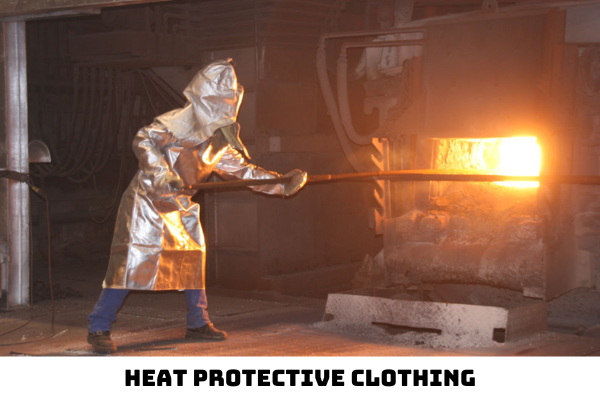National Standard TCVN 6878: 2007 (ISO 6942: 2002): What are the testing methods applicable to heat-protective clothing depending on thermal radiation in Vietnam?
- What are the methods for determining the properties of materials used for making heat-protective clothing depending on thermal radiation in Vietnam under National Standard TCVN 6878: 2007 (ISO 6942: 2002)?
- What is the testing equipment used for both test methods in Vietnam?
- What is the determination of incident heat flux density in Vietnam?
- What is the information in the post-use test report for the two test methods for determining the properties of materials used for making heat-protective clothing in Vietnam?
What are the methods for determining the properties of materials used for making heat-protective clothing depending on thermal radiation in Vietnam under National Standard TCVN 6878: 2007 (ISO 6942: 2002)?
National Standard TCVN 6878: 2007 (ISO 6942: 2002) specifies two complementary test methods, including method A and method B, to determine the properties of materials used for making heat-protective clothing depending on thermal radiation.
These tests are conducted on typical single or multilayer textiles or other materials used for heat-protective clothing. The tests can be applied to combinations to make the outer layer of heat-resistant clothing combinations with or without underwear.
Method A is suitable for visually evaluating changes in materials after the effects of thermal radiation. Method B determines the protective effect of the material. The material can be tried by both methods or only by one of them.
Tests using these two methods are suitable for material classification; However, in order to be able to draw a conclusion or forecast the suitability of the material for protective clothing, it is necessary to take into account additional standards.
Since the test is conducted at room temperature, the results do not necessarily correspond to material properties at higher ambient temperatures, and therefore the test is only suitable within a certain range for predicting properties of protective clothing made from the materials under test.
What is the testing equipment used for both test methods in Vietnam?
Based on Section 5, National Standard TCVN 6878: 2007 (ISO 6942: 2002), the testing equipment used for both test methods in Vietnam includes:
- Radiation sources;
- Testing frame;
- Test specimen cradle;
For Method B, the following additional equipment is required:
- Calorimeter;
- Temperature measuring and recording equipment;

What is the determination of incident heat flux density in Vietnam?
Based on Section 8.2, National Standard TCVN 6878: 2007 (ISO 6942: 2002), the determination of incident heat flux density in Vietnam is specified as follows:
Move the diaphragm out of position and put it back after the temperature rises to 30oC.
The recorded output signal should show a short non-linear temperature/time correlation just after the start of irradiation, and then continue to be in the linear domain until the end of irradiation.
Refer to the electromotive force tables on the standard thermocouple to determine the rate of temperature increase in the linear range, R, in oC/s.
The incident heat flux density, Q, unit kW/m2, is determined by the following equation:

Where:
M is the mass of the copper disc, in kg;
Cp is the specific heat capacity of copper 0.385 kJ/kg oC;
R is the temperature increase rate in the linear domain, in oC/s;
A is the area of the copper disc, in m2;
α is the absorption coefficient of the painted surface of the calorimeter.
The incident heat flux density is then adjusted to a specified level of ± 2 % by varying the distance, d, between the radiation source and the calorimeter.
What is the information in the post-use test report for the two test methods for determining the properties of materials used for making heat-protective clothing in Vietnam?
Based on Section 9, National Standard TCVN 6878: 2007 (ISO 6942: 2002), a test report must include the following information:
- Reference to this National Standard;
- Description of the material tested (including the color of the outermost layer of the material), individual layers and arrangement, and trade name(s), if available.
- Temperature and humidity of the test environment;
- The levels of incident heat flux density selected for the tests;
- Number of test specimens tested at each level;
- Describe any changes in the appearance of the test specimens during testing according to method A;
- individual values of the transmitted heat flux density Q0 or the mean and standard deviation if five or more test specimens are tested per level of incident heat flux density;
- Individual values of the heat transfer coefficient TF (Q0) or mean value and standard deviation if five or more test specimens are tested per level of incident heat flux density;
- Individual values of the times t12 and t24 to achieve different heat transfer rates or the mean and standard deviation if five or more test specimens are tested per level of incident heat flux density;
- As specified in the reference standard, the specific time values of time, t12, the time in seconds for the temperature increase on the calorimeter (24 ± 0.2)oC, and the difference between t24 and t12.
- The date of the trial;
- Any deviations from this standard;
- The degree of uncertainty in each test measurement.
LawNet